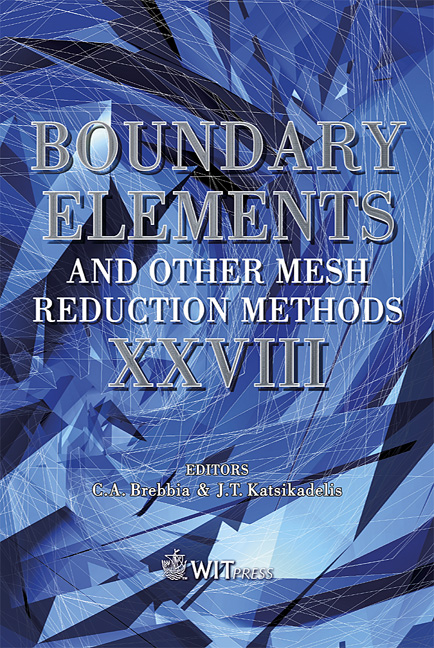Wave Motion Through Cracked, Functionally Graded Materials By BEM
Price
Free (open access)
Transaction
Volume
42
Pages
10
Published
2006
Size
545 kb
Paper DOI
10.2495/BEM060311
Copyright
WIT Press
Author(s)
G. D. Manolis, T. V. Rangelov & P. S. Dineva
Abstract
Elastic waves in cracked, functionally graded materials (FGM) with elastic parameters that are continuous functions of a single spatial co-ordinate are studied herein under conditions of plane strain and for time-harmonic incident pressure (P) and vertically polarized shear (SV) waves. The FGM has a fixed Poisson’s ratio, while both shear modulus and density profiles vary proportionally. The method of solution is the boundary element method (BEM). The necessary Green’s functions for the infinite plane are derived in closed-form using functional transformation methods. Subsequently, a non-hypersingular, traction-type BEM is developed using parabolic boundary elements, supplemented with special crack-tip elements for handling crack edges. The methodology is validated against benchmark problems and then used to study wave scattering phenomena around a crack in an infinitely extending FGM. 1 Introduction Abrupt change in material properties across interfaces between layers in composites and other materials may result in large inter-laminar stresses leading to delamination phenomena. One way to overcome these effects is to use FGM, which are inhomogeneous materials with continuously varying material properties. However, defects and cracks are commonly present in FGM, both during the manufacturing process and under service conditions. This calls for advanced numerical methods to assist in the development of ultrasonic and other
Keywords





